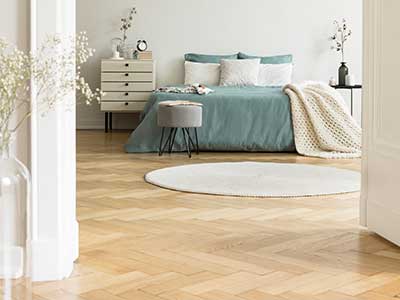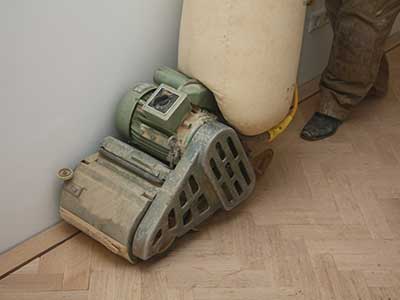Back to Parquet Restoration
Unveiling the Beauty: Parquet Floor Restoration Secrets Revealed
 Parquet floors have remained a favoured flooring option for centuries, and their enduring popularity is easily comprehensible. The inherent elegance and sophistication they lend to any residential or commercial space imbue a sense of opulence and refinement. Moreover, their renowned durability and longevity make them a worthwhile investment for homeowners seeking to augment the value of their property.
Parquet floors have remained a favoured flooring option for centuries, and their enduring popularity is easily comprehensible. The inherent elegance and sophistication they lend to any residential or commercial space imbue a sense of opulence and refinement. Moreover, their renowned durability and longevity make them a worthwhile investment for homeowners seeking to augment the value of their property.
Nonetheless, the task of restoring a parquet floor can appear formidable, leaving many individuals uncertain about where to commence. Fortunately, there are key insights that can greatly facilitate the process. Foremost among them is the recognition that collaborating with a seasoned and qualified professional possessing the requisite skills and expertise is imperative to achieving desirable outcomes. Through diligent research and identification of a reputable contractor, homeowners can be confident in the successful execution of their parquet floor restoration project, ensuring that their exquisite hardwood flooring maintains its timeless allure for years to come.
Understanding Parquet Floors
Parquet flooring offers a captivating and distinct way to enhance the allure and individuality of any living space. This flooring style comprises small, meticulously arranged wooden pieces that form intricate patterns, creating a visually captivating and decorative effect. With a vast assortment of sizes, shapes, and styles available, parquet flooring proves to be an exceptionally versatile choice that harmonises seamlessly with various interior design schemes. There are several types of parquet patterns and designs to choose from, including herringbone, chevron, basket, and brick patterns.
These patterns can be achieved using a diverse range of materials, including oak, walnut, cherry, and maple, among others. The selection of materials for parquet flooring construction often hinges upon desired characteristics like colour, texture, and durability. Oak, renowned for its durability and appealing grain pattern, is a frequently favoured choice. Similarly, maple, with its light hue and tight grain pattern, evokes a bright and contemporary ambience, making it a popular option. Parquet flooring stands as a stylish and functional choice for any home, accommodating both classic and modern aesthetics. With a plethora of designs available, there is a parquet flooring option that perfectly complements your interior, adding a touch of elegance and practicality to your living space.
Assessing the Condition
When evaluating the condition of your parquet floors, there are essential considerations to keep in mind. Begin by familiarising yourself with the telltale signs that indicate your floors may require restoration. Look out for uneven surfaces, gaps between planks, or visible wear and tear. Promptly addressing these signs can prevent more severe issues from arising.
Once you've identified the signs, the next step involves pinpointing the specific damage or wear causing the problem. Conduct a thorough examination of the floor's surface, paying attention to areas with visible damage. If unsure about what to look for, seek guidance from a professional flooring company. Their expertise can help identify concerns and provide suitable recommendations.
Assessing the condition of your parquet floors is crucial for their long-term maintenance. By closely monitoring signs of wear or damage and seeking advice from flooring professionals, you can ensure your floors not only retain their aesthetic appeal but also remain safe and functional for your family and guests. If it has been a while since you last assessed your parquet floors, now is the perfect time to embark on this important task.
Pre-Restoration Preparation
Proper preparation before commencing a restoration project is paramount for its success. Several key considerations during this phase contribute to a smooth and efficient process. Begin by clearing the area of furniture and any obstructions that could hinder the restoration work. This ensures unrestricted access for professionals to thoroughly clean, treat, and restore every part of the space.
Thorough cleaning and surface preparation are essential at this stage. All surfaces must be meticulously cleaned to eliminate dirt, debris, and other contaminants that might impede the restoration process. Simultaneously, addressing moisture issues is crucial. Excessive moisture can lead to mould growth and further property damage. Identifying and resolving moisture concerns prior to restoration is vital. This may involve conducting a moisture assessment and implementing measures such as installing ventilation systems or dehumidifiers to regulate moisture levels effectively.
Parquet Floor Restoration Techniques

Parquet floors exude elegance and add a captivating touch to any home. However, with time, even the most resilient flooring can succumb to wear and tear, resulting in scratches, gaps, and other imperfections. Thankfully, several restoration techniques can help revive your parquet floor's former grandeur.
Sanding
An integral part of parquet floor restoration is sanding. Wood floor sanding is crucial for achieving a smooth and level surface, eliminating any irregularities or flaws in the wood. Employing specialised equipment and skilful techniques is essential, as excessive sanding can irreparably damage the parquet tiles.
Repairs & gap filling
Repairing damaged parquet tiles is another pivotal step in the restoration process. This entails replacing broken or chipped tiles, securing loose tiles, and filling gaps. Depending on the extent of the damage, repairing parquet tiles can pose challenges that demand precision and expertise. Filling gaps is a crucial step in the parquet floor restoration process. Over time, gaps can naturally occur or be caused by changes in temperature and humidity. By filling these gaps, further damage to the parquet flooring can be prevented while enhancing its visual appeal. Various techniques are available for wood gap filling, such as using natural wood filler, coloured filler, or a mixture of sawdust and glue.
Staining
Once the parquet floor has been sanded and repaired, homeowners can explore a range of wood floor staining and finishing options to enrich both the aesthetics and durability of their flooring. Staining allows for the alteration of the wood's colour, while finishes provide protection against scratches, spills, and other types of damage. Popular finish choices include satin, semi-gloss, and glossy, each offering varying levels of shine and safeguarding properties.
Finishing
Parquet floors embody timeless elegance and serve as a beautiful, traditional flooring option for homes and offices. To ensure their long-lasting beauty, proper care is essential, including the application of a protective coating. A seal and protection treatment is vital to shield parquet floors from wear, moisture, and stains, which can diminish their allure. This finishing process involves applying durable layers of lacquers, varnishes, or high-quality coatings to provide sustained protection and enhance their aesthetics. These coatings are designed for easy application, fast drying times, and enduring results.
Additionally, they come in various sheen levels, such as satin, gloss, or matt, enabling customisation according to personal preferences. With proper finishing, your parquet floors will retain their beauty and value for many years, making them a worthwhile investment for any residential or commercial space.
DIY vs. Professional Restoration
When it comes to the restoration of parquet floors, the decision between engaging in a DIY project or enlisting the services of a professional can be a daunting task. Each option has its own set of pros and cons. Undertaking a DIY project may save you money and give you a sense of personal achievement. However, it demands a significant investment of time and exertion to bring it to completion. Moreover, there exists a risk of committing errors that could result in irreversible damage to the floor.
Hiring professional flooring specialists can give you peace of mind knowing that the job will be done right. Professionals have the necessary tools, knowledge, and experience to handle any issues that may arise during the restoration process. They can also provide expert advice on how to maintain and care for your floor after the restoration process. However, hiring a professional can be expensive. It's essential to balance the pros and cons of each option and determine which one is best suited for your circumstance.
You may consider seeking expert help if your parquet floor has significant damage, such as deep scratches, extensive water damage, or mould growth. Attempting to fix these issues yourself may not only cause further damage to the floor but may also harm your health due to exposure to mould and mildew. A professional can determine the best course of action to take when dealing with such cases. It's always essential to weigh the benefits and considerations of each option before making a decision on floor restoration. Ultimately, the best solution is the one that suits your budget, needs, and level of expertise.